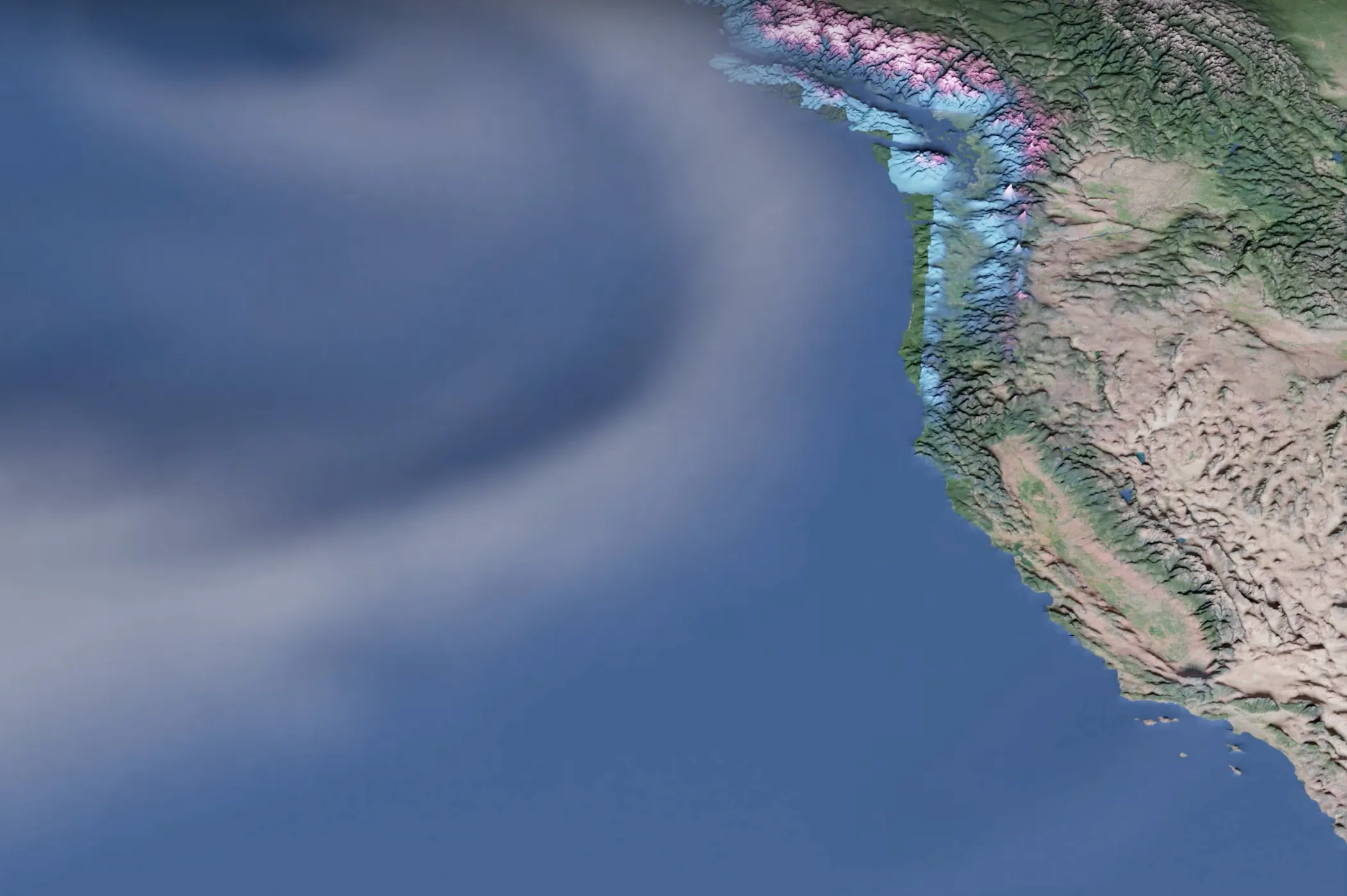
Atmospheric River Simulations Over the Western US Using CESM with the Non-Hydrostatic MPAS Dynamical Core Across Scales
In this experiment, we use the non-hydrostatic Model for Prediction Across Scales (MPAS) dynamical core in the Community Earth System Model (CESM) to simulate atmospheric rivers (ARs) across scales in a regionally refined configuration down to 3km over the western US. The precipitation over the western US coast is largely associated with concentrated water vapor transport over the North Pacific, known as atmospheric rivers.
Here, we show the global view of large-scale moisture flux transport and the associated ARs. We further zoom into the refined domain over the western US for the ARs-driven precipitation. The visualization shows the tracks of the ARs in terms of the instantaneous integrated moisture flux transport and the accumulated landfalling precipitation over the coastal regions during the simulated winter season. The refined grids realistically capture the terrain details and the fine-scale details of the precipitation over the heavily impacted region. The high-resolution nest at 3km can resolve the AR features from the southwest to the northwest coast and the heavy precipitation events that bring major impacts from the coastal ranges to the mountainous regions.
We also look at the rain vs. snow accumulation overlaid with the water vapor transport pattern over the refined region. The model simulates significantly enhanced snowpack distributions over much better resolved complex mountainous terrains (mainly over the Cascade Range, coastal range, and Sierra Nevada). The accumulated intense rainfall over the mountainous ranges and downstream communities has a direct influence on the flooding risk, and the results show the potential for studying ARs and the hydrological impacts using this new modeling framework. Overall, we quantify and visualize the multi-scale precipitation extremes under a high-resolution integrated modeling framework using CESM-MPAS. The simulation and visualization give us a better understanding of the extreme AR events and intensifying water cycle and extremes.
Acknowledgments: This work was supported by the NSF-funded project EarthWorks and NSF NCAR. Computing resources were provided by the Climate Simulation Laboratory at NSF NCAR’s Computational and Information Systems Laboratory (CISL). Reference: Huang, X., Gettelman, A., Skamarock, B., Lauritzen P.H., et al., 2022. Advancing Precipitation Prediction Using a New Generation Storm-resolving Model Framework – SIMA-MPAS (V1.0): a Case Study over the Western United States. Geoscientific Model Development, 15(21), pp.8135-8151. https://doi.org/10.5194/gmd-15-8135-2022.
Xingying Huang (NCAR CGD)
Video Design and Scripting: Xingying Huang (NCAR CGD), Christine Shields (NCAR CGD), Matt Rehme (NCAR CISL), Nihanth Cherukuru (NCAR CISL)
Matt Rehme (NCAR/CISL)
Python, Blender